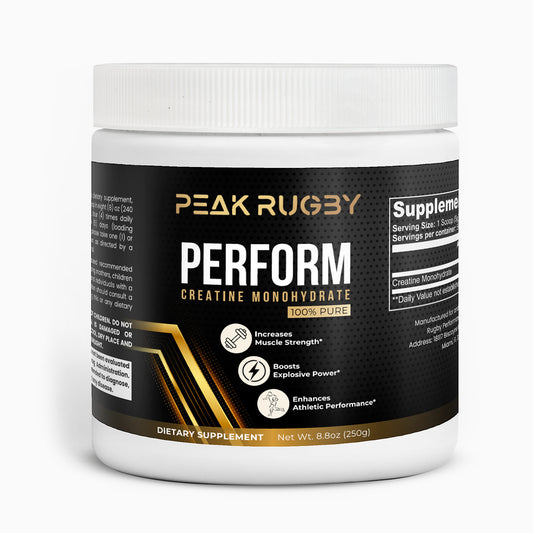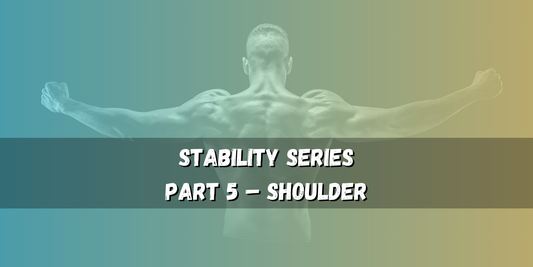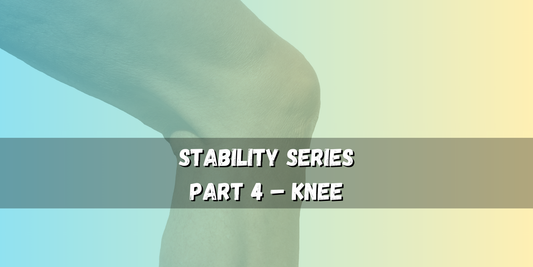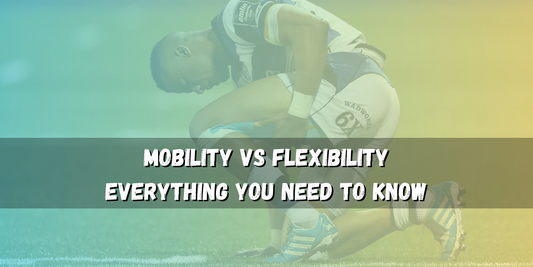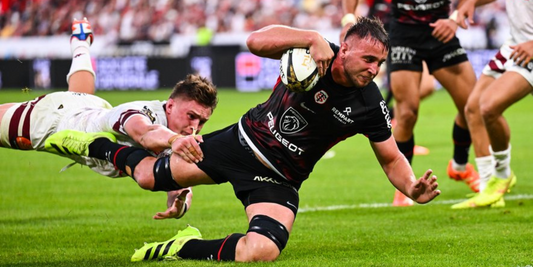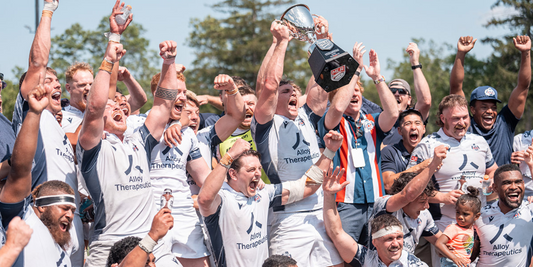If you want to explode through tackles, sprint off the mark, and make game-changing plays, you need power—the ability to produce force quickly.
This article breaks down how to develop rugby-specific power using proven principles and progressions, helping you train with purpose and unleash maximum speed and impact on the field.
You’ll also get access to a downloadable 5-day power training plan featuring the key movements and methods for building explosive performance.
Here’s how the series looks like:
- Part 1: How to Build a Strong Core for Rugby
- Part 2: How to Build Strong Legs for Rugby
- Part 3: How to Build Strong Shoulders for Rugby
- Part 4: How to Build a Strong Back for Rugby
- Part 5: How to Build a Strong Neck for Rugby
- Part 6: How to Build Strong Wrists and Grip for Rugby
- Part 7: How to Build Strength for Rugby
- Part 8: How to Build Power for Rugby
- Part 9: How to Build Speed for Rugby
Let’s move to your next foundation: explosive power.
WHY POWER MATTERS IN RUGBY
Power is what turns strength into speed. It’s the difference between moving weight—and moving it fast. And in rugby, that speed of force production is everything.
Power helps you:
- Sprint faster and cut sharper
- Break tackles and hit with more impact
- React explosively at the breakdown
- Win races to the ball, the line, or the gap
- Maintain top performance even under fatigue
Strength without speed is limited. Power is how you weaponize your strength.
UNDERSTANDING POWER FOR RUGBY
Power = Force × Velocity.
In rugby, that means applying strength quickly—under dynamic and unpredictable conditions. There are several types of power to train:
1. Lower-Body Power
Essential for sprinting, jumping, tackling, and driving.
2. Upper-Body Power
Required for passing, fending, contact hits, and offloading.
3. Rotational Power
Helps generate torque through the hips and core—for directional changes and contact.
4. Reactive Power
The ability to absorb and redirect force quickly—key for agility, defense, and transitions.
RUGBY-SPECIFIC POWER DEMANDS
Power in rugby is often:
- Unilateral (off one leg or arm)
- Explosive under load (tackling, mauling)
- Multiplanar (rotating, twisting, driving)
- Fatigue-resistant (late in the match)
Your training should reflect that. It’s not just about jumping high—it’s about producing force in the context of rugby.
THE TRAINING PROGRESSION
Power must be built on a foundation of strength and movement efficiency. Here’s how to approach it:
1. Plyometric Base
Develop landing mechanics and elastic energy:
- Jump squats (bodyweight to light load)
- Broad jumps and single-leg hops
- Lateral bounds and pogo jumps
2. Ballistic and Speed-Strength Movements
Train speed through resistance:
- Medicine ball throws (scoop, rotational, chest pass)
- Trap bar jumps or band-resisted squats
- Push press or jerk variations
3. Contrast and Complex Training
Pair strength and power:
- Heavy trap bar deadlift + broad jump
- Front squat + jump squat
- Bench press + med ball chest pass
4. Game-Transfer Drills
Finish with rugby-specific power:
- Short sprints from various start positions
- Sled pushes or band-resisted accelerations
- Contact bag hits and reactive agility drills
Progress from absorption → production → combination → sport transfer.
KEY TAKEAWAY: POWER = IMPACT
Power wins moments. It’s the burst through a tackle. The step past a defender. The hit that turns the tide.
If you want to change the game—not just survive it—you need power in every part of your body. Train fast. Train with intent. And keep it specific.
GET YOUR FREE POWER TRAINING PLAN
Want a proven, practical plan to build more power for rugby? Enter your email below to get your free copy. We’ll send it straight to your inbox.
This free PDF includes 5 power-based rugby sessions featuring:
- Med ball work, jumps, and speed lifts
- Lower/upper body power circuits
- Game-transfer drills to tie it all together
Download it now and start training like a rugby athlete.
If you found this article helpful, don’t forget to:
- Like and share this post with your teammates and fellow rugby fans
- Bookmark the blog to stay updated on the next rounds
- Follow @gopeakrugby on X and Facebook and subscribe to our Youtube Channel for more rugby analysis, match recaps, and insights



